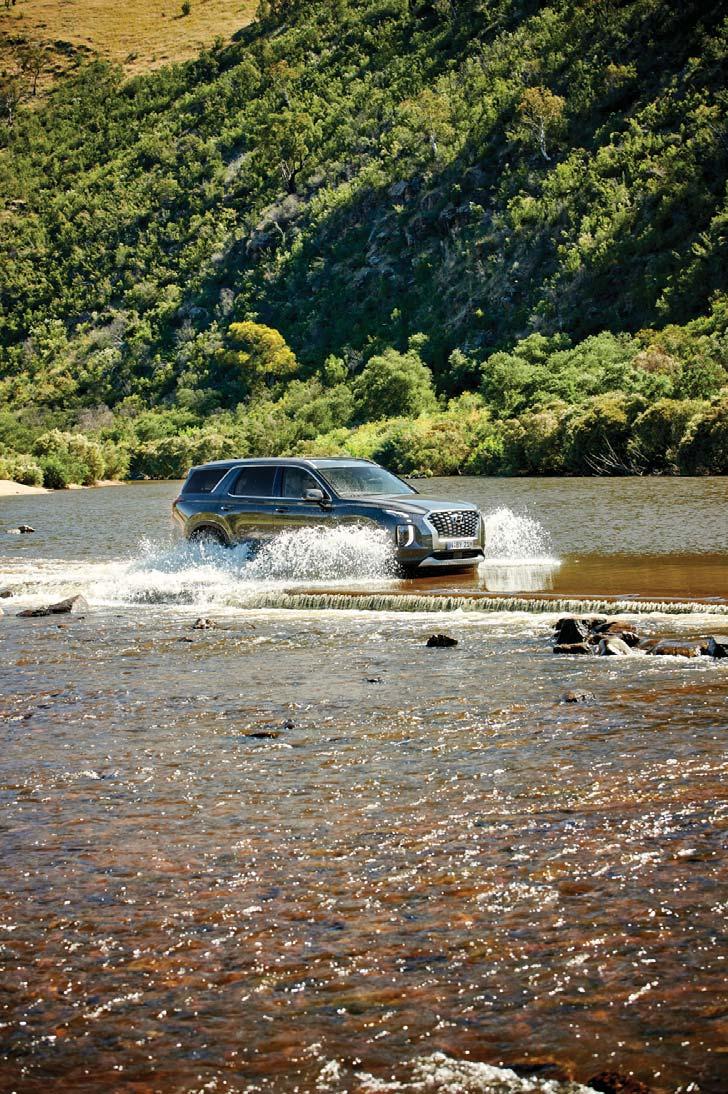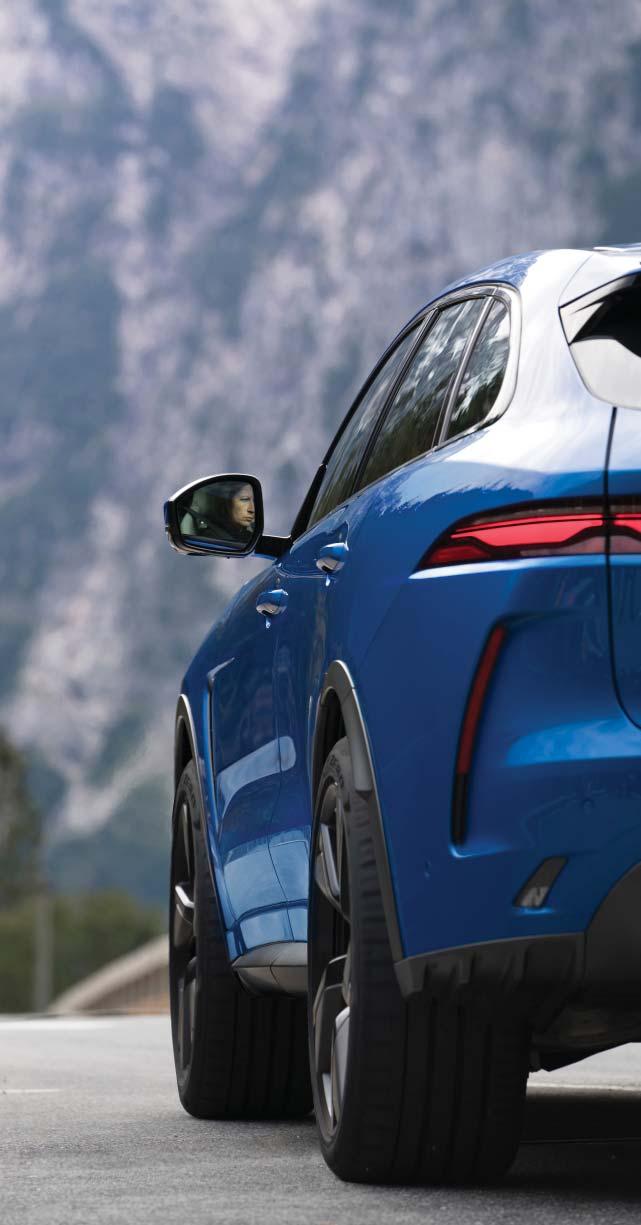
8 minute read
Auto

Eight-seat Hyundai Palisade family SUV goes aft er people-movers as well as Prado
Advertisement


HAITHAM RAZAGUI
THE Hyundai Palisade large SUV has arrived in Australia in time for Christmas family road-trips, priced from $60,000 plus on-road costs, undercutting the Nissan Patrol by almost $16,000 to make it Australia’s most affordable new eight-seat SUV.
For those not requiring serious off -road or towing capability, the Palisade’s Prado-like pricing is likely to tempt people out of Toyota’s junior LandCruiser, withHyundai saying it also provides an alternative to a people mover – such as a Kia Carnival or Honda Odyssey – for people who “prefer the style, fl exibility and driving qualities of an SUV”.
In addition, the Palisade off ers an eightseat SUV package that has until now been exclusive to bigger, thirstier, higher-priced vehicles such as the Nissan Patrol and LandCruiser 200 Series that occupy the upper-large SUV segment.
To achieve this, the Palisade matches the Kia Carnival in height (175cm) and width (197cm) – almost as wide as a Patrol – while its 498cm length makes it a centimetre shorter than the Prado.
It is substantially longer and wider than the Santa Fe seven-seat SUV with which it shares a showroom and segment, but can tow 200kg more than its smaller sibling, at 2200kg braked.
Like a Honda Odyssey, the top-spec Palisade variant can be specifi ed with a bench-style second row for the full eightseat capacity or a pair of captain’s chairs providing a gangway for access to the thirdrow bench.
Safety is catered for with six airbags
Th e Palisade’s two specifi cation levels – Palisade and Highlander – are off ered with a choice of front-drive V6 petrol and all-wheeldrive four-cylinder turbo-diesel drivetrain options, both distributing drive through an eight-speed automatic transmission.
Th e 3.8-litre V6 petrol engine sends 217kW of power and 355Nm of torque to the front wheels, with offi cial combined-cycle fuel consumption rated at 10.7 litres per 100 km.
Carrying a $4000 premium over the petrol, a 147kW/440Nm 2.2-litre four-cylinder turbo-diesel powers all four wheels, with fuel consumption pegged at 7.3L/100km on the combined cycle.
Black leather upholstery, electric driver’s seat adjustment, tri-zone automatic climate control with ceiling vents and a 12-speaker Infi nity premium audio system are all standard, as is a 10.25-inch touchscreen media system with native satellite navigation as well as Apple CarPlay and Android Auto smartphone integration plus the ability to simultaneously pair multiple Bluetooth devices.
Th ere is also a 7.0-inch digital instrument panel, keyless entry and start, thirdrow intercom, ‘quiet mode’ audio isolation, an electric park brake with auto-hold, front and rear parking sensors, dusk-sensing headlights, self-dimming rearview mirror, reversing camera and tyre pressure monitoring for the 18-inch alloys with full-size alloy spare.
Safety is catered for by six airbags including side curtains for all three rows plus a suite of active safety and driver assist technologies that include forward collision warning and autonomous emergency braking with pedestrian and cyclist detection that has several stages of operation between 10km/h and 160km/h.
Other standard-fi t systems include adaptive cruise control with stop-and-go functionality, lane-keep assist with lane departure warning, blind spot monitoring with rear cross-traffi c collision avoidance, driver alertness monitor, high beam assist and an ultrasonic rear occupant alert that detects passengers and pets to prevent them being accidentally left in the car.
For an extra $11,000 the Highlander gets burgundy or beige Nappa premium leather with suede headlining, 12-way electric driver’s seat adjustment with memory, eight-way electric front passenger seat adjustment, heated and ventilated front and middle-row seats (heated only in eight-seat form), a heated steering wheel, wireless phone charger, hands-free powered tailgate, dual-panel tilt/slide sunroof, second-row window blinds and 20-inch alloys.
Additional safety tech on the Highlander comprises ‘safe exit assist’ which helps prevent opening doors onto oncoming cyclists, pedestrians and traffi c, 360-degree cameras with blind spot view, rain-sensing wipers and a head-up display.
Eight-seat Palisade variants have fi ve child seat anchorages with ISOFIX connection points in two second-row seats and one thirdrow seat, while seven-seaters have four child seat anchorages and three ISOFIX points.
Th ere are also 16 cupholders and seven USB ports plus a plethora of in-cabin storage areas, a reclining third-row backrest, onetouch seat tilt/slide for easier third-row access.
Premium paint is $695, with 12-month/15,000km service intervals fi xed at $399 for each of the fi rst fi ve maintenance visits on the petrol and $469 for the diesel.
Although the Palisade was revealed as a left -hook-only proposition two years ago, Hyundai has since developed the right-hand-drive model primarily for the Australian market as one of the brand’s fi rst models to go through an evolution of its local dynamic tuning program.
Hyundai Motor Company Australia now gets involved early in the development of new models at its parent company’s Namyang research and development centre in South Korea, before the dynamics and ride comfort are assessed on local roads back in Australia.
As with other Hyundai models the Palisade comes with a fi ve-year unlimited kilometre warranty, 12 months’ roadside assist and up to 10 years of sat-nav map updates if servicing is carried out at Hyundai dealerships.
2021 Hyundai Palisade pricing*
Palisade (a) $60,000
Palisade CRDi (a) $64,000
Highlander (a) $71,000
Highlander CRDi (a) $75,000 *Excludes on-road costs


New F-Pace SVR scores a power bump and styling upgrade from Jaguar



CALLUM HUNTER

TWO and a half months after detailing its refreshed F-Pace line-up, Jaguar Land Rover (JLR) Australia has debuted its updated SUV flagship in the form of the facelifted F-Pace SVR; the most powerful Jaguar family hauler to date.
Armed with a retuned version of the familiar supercharged 5.0-litre V8, the SVR now pumps out 405kW of power (+1kW) and 700Nm of torque (+20Nm) resulting in a 4.0-second 0-100km/h time and a slightly higher top speed of 286km/h.
While performance is undoubtedly the primary objective of the SVR, JLR also claims to have improved the V8’s emissions and fuel economy, down to 275g of CO2 per kilometre and 12.2 litres per 100km on the combined cycle respectively.
Matching the retuned powerplant is an updated version of the existing eight-speed automatic transmission which now features the same torque converter as seen in the XE SV Project 8, with drive still being sent to all four wheels.
Stopping power has also been enhanced with the recalibrated braking system now supported by a new ‘integrated power booster’ resulting in a shorter pedal stroke and more feel.
To make the SVR as capable as possible in the bends as well as the straights, JLR engineers have fett led with the steering and added a new electronic power-assistance system designed to enhance steering response.
Revised chassis bushes and a retuned adaptive damping system play their own part in improving the handling but their main role lies in upping the comfort stakes – a key element for a premium SUV.
According to Jaguar Special Vehicle Operations managing director Michael van der Sande, the original F-Pace SVR went on to become the highest-selling Jaguar SV product due to its charming character.
“Th e new version builds on this success, by making numerous detailed improvements that combine to raise the bar in the high-performance SUV segment,” he said.
Visually, the new model follows the same trend as the rest of the updated F-Pace range in having a more aggressive bonnet and front fascia than the previous model with many of the changes – including bigger intakes and more vents – being 100 per cent functional.
The calibration of every single component
While the bigger openings aid engine and brake cooling, the overall design is said to reduce aerodynamic lift by as much as 35 per cent and cut the drag coeffi cient from 0.37Cd to 0.36Cd.
Also like in the standard variants, the SVR’s interior has been completely overhauled with an abundance of Alcantara and Windsor leather used for the upholstery and trim while the instrument cluster is an SVRtweaked version of the 12.3-inch all-digital unit as seen in the lesser grades.
Embossed SVR logos are smattered about the place while the standard steering wheel has been replaced by a new SVR split-rim unit adorned with zinc-alloy paddle shift ers.
Infotainment duties are catered for by the same Pivi Pro system as seen in other variants, accessed via a new fl oating 11.4-inch curved HD touchscreen.
Adaptive cruise control, blind spot monitoring, rear collision monitor, rear traffi c monitor, traffi c sign recognition and adaptive speed limiter are all included as standard.
F-Pace SVR chief programme engineer Paul Barritt said the improvements to the new SVR over the old one was the result of revisiting “the calibration of every single component”.
Despite the wealth of upgrades, the new SVR’s asking price has only risen marginally ($420) in comparison to its predecessor, now carrying a sticker price of $141,040 plus on-road costs with fi rst deliveries expected to commence in April next year.
JLR Australia has sold 290 F-Paces so far this year ending November, accounting for a slim 1.9 per cent of the $70,000plus large SUV segment, a segment current being dominated by the Mercedes-Benz GLE wagon (2661/17.3%) and BMW X5 (2589/16.8%).

2021 Jaguar F-Pace pricing*
S P250 (a) $74,990
SE P250 (a) $79,600
SE D300 (a) $94,940
SE P400 (a) $97,400
HSE P400 (a) $109,150
SVR (a) $141,040








